.
10.11.2014
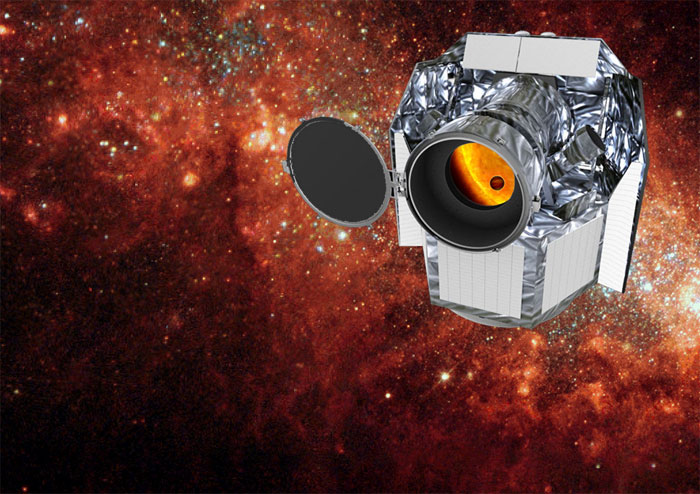
ESA’s first small type mission CHEOPS will monitor brightness of stars to help determine radii of exoplanets Company will lead design and construction of the satellite to be launched in December 2017
.
LAUNCH YOUR DESIGN WITH CHEOPS
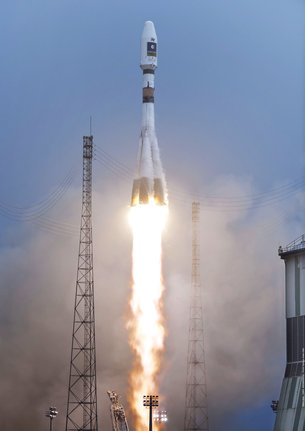
ESA is offering graphic designers and artists a unique opportunity to feature their work on the rocket carrying the Cheops satellite.
The design will be placed on the Soyuz rocket’s fairing, the tough outer shell that protects the satellite during launch and as it passes through the atmosphere into space.
At an altitude of about 100 km the fairing will be jettisoned and fall back to Earth, while Cheops will continue into orbit.
Cheops, a partnership between ESA and Switzerland, will observe bright stars known to host planets.
Scientists will use high-precision monitoring of a star’s brightness to examine the transit of a planet as it passes briefly across the bright face.
The information will help to reveal the structure of planets circling other stars, especially those in the Earth-to-Neptune mass range. The mission will also contribute to our understanding of how planets change orbits during their formation and evolution.
Cheops is currently on track to be ready for launch by the end of 2018.
This competition is an exciting opportunity for students of graphic art or design, or early career graphic artists and designers to make one of their designs a part of ESA history.
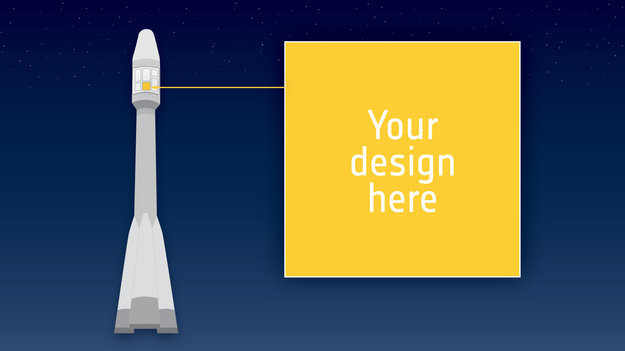
For the winner, the design will be visible during launch preparations and liftoff, as well as on photographs and video footage taken at the spaceport in Kourou, French Guiana.
In addition, the winner will be invited to attend the main Cheops launch event in Europe as a guest of ESA and to watch as their design climbs skywards.
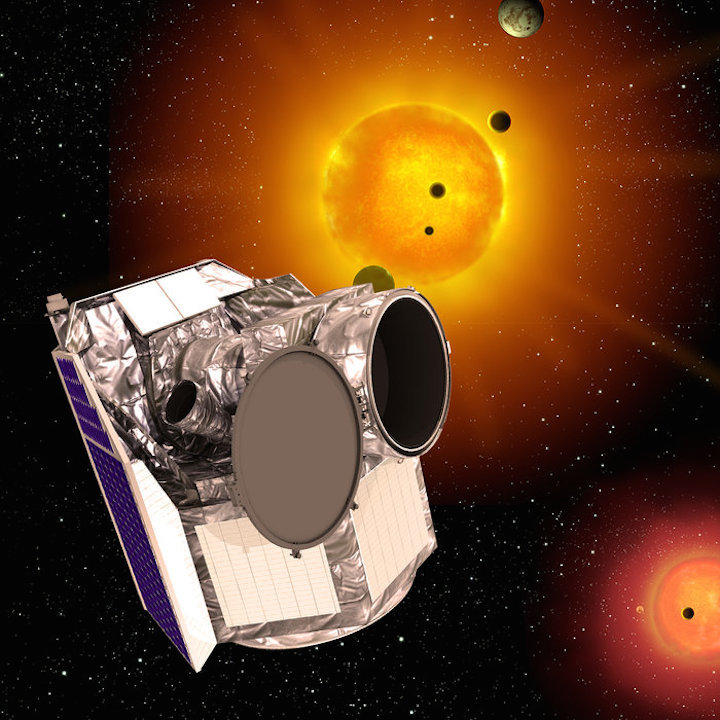
Designs selected as runners-up will be exhibited during the event, which will be broadcast through multiple media channels.
You can read more about Cheops on the dedicated ESA webpages and on the mission webpages from the University of Bern.
Read the full competition rules here.
The deadline for submissions is 17:00 GMT (18:00 CET) on 31 January.
Quelle: ESA
---
Update: 8.04.2018
.
Space telescope CHEOPS leaves the University of Bern
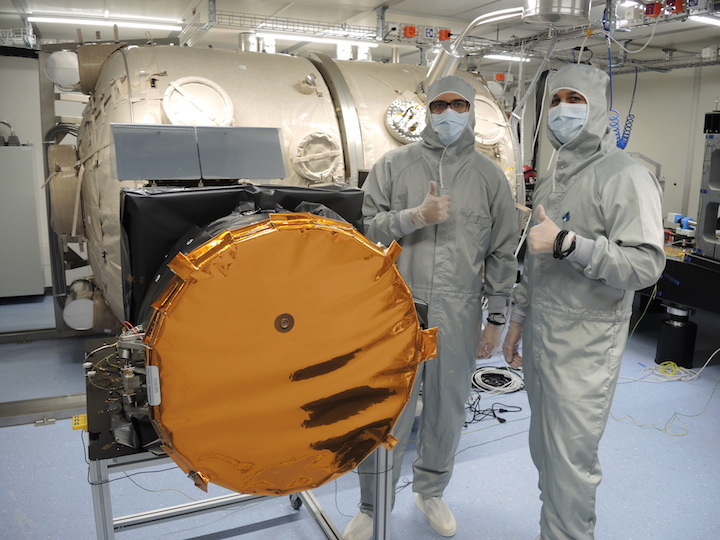
Construction of the space telescope CHEOPS is finished. The engineers from the Center for Space and Habitability (CSH) at the University of Bern will package the instrument this week and send it to Madrid, where it will be integrated on the satellite platform. CHEOPS (CHaracterising ExOPlanet Satellite) is to be ready to launch in early 2019. It will observe how exoplanets in other solar systems pass in front of their host star – and assist in the search of potentially habitable planets.
The specially designed transport case is ready and waiting in the building for Exact Sciences of the University of Bern. In the next few days, the CHEOPS team will load the space telescope in the cleanroom into the transport container, where it is well protected against shock, moisture and dirt. A truck will then transport the precious cargo to Madrid. The company "Airbus Defense and Space - Spain" built the satellite platform that supports the telescope and enables it to operate in space. In the upcoming weeks the instrument will be integrated and the satellite will be tested.
The space telescope will observe stars in our cosmic neighbourhood that are known to be orbited by exoplanets. CHEOPS measures the brightness of the stars. This decreases slightly when an exoplanet passes in front of its host star. The size of the exoplanet can be determined by the decrease in brightness during such a transit. “The instrument must be able to measure with extreme precision. This was the major design challenge," says Willy Benz, professor of Astrophysics at the University of Bern and Principal Investigator of the CHEOPS mission, which Switzerland is carrying out together with the European Space Agency (ESA). “We think that we meet the requirements, otherwise we would not be flying," says Christopher Broeg, project manager for the CHEOPS mission.
Components from different countries
Institutes from eleven European nations are involved in the CHEOPS mission. The structure was designed and manufactured in Switzerland, the optics as well as the flight software and other components originate from international partner institutions . At the University of Bern, the various parts were assembled in the cleanroom and the telescope was subjected to vibrations on the shaker, similar to those vibrations it will have to withstand at the start. “We were relieved when the mirror and its adhesive bonding passed the vibration test," remembers Christopher Broeg, thinking back on the particularly delicate test phase.
The team was put under tremendous time pressure. CHEOPS is ESA’s so-called first small ‘S-class mission’. It must be implemented within a few years and cannot cost ESA more than 50 million euro. Switzerland pays around 30 million euro, while the remaining partners pay about 20 million euro. “We are proud that we were able to stick to the budget in the end, which cannot always be taken for granted in such projects," says Willy Benz. In order not to delay the project too much, the engineers had to carry out different jobs in parallel instead of following the initially planned sequence. This meant that the load-bearing structure had to be determined even before one knew exactly how the mirror was to be mounted. This was particularly tricky because the position of the main and secondary mirrors must remain stable, even if the temperature changes in orbit. The tests finally showed that the construction works. “We are even more stable than we first thought," says Christopher Broeg happily.
In the last few weeks, the engineers calibrated the instrument and tested the software. Following its integration in Madrid, the satellite will be tested at several locations in Europe before being sent to Kourou, ESA's space station in French Guiana. It will return one last time to Switzerland in order to pass another vibration test. By early 2019, CHEOPS should be ready to launch. A Soyuz rocket will launch it together with a larger Italian radar satellite into a 700-kilometer orbit. “I'm looking forward to seeing CHEOPS in space and getting the first data," says Willy Benz.
Quelle: University of Bern
---
Update: 4.07.2018
.
ESA exoplanet hunter CHEOPS set to depart Spain for pre-launch testing
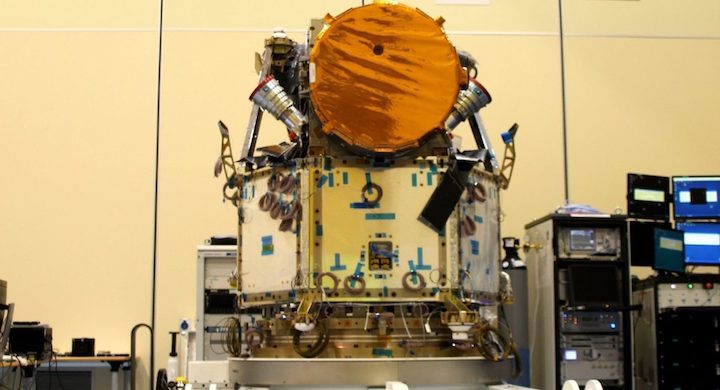
The CHEOPS (CHaracterising ExOPlanet Satellite) spacecraft has completed integration work at Airbus’ Madrid-Barajas site and is now set to be shipped around Europe for testing. This spacecraft will be the first mission dedicated to searching for exoplanetary transits by performing ultra-high precision photometry on bright stars already known to host planets.
Nearly eight years ago, CHEOPS was selected for study as the first S-class mission in Cosmic Vision 2015-2025. The mission was formally adopted in early February 2014, with the launch planned for early 2019.
It is set to be launched by an Arianespace Soyuz rocket from the Guiana Space Centre to a sun-synchronous orbit with a 650-800 km altitude and is set to spend at least 3.5 years collecting science. It will ride along with CSG-1 (COSMO-SkyMed Second Generation-1) via the Soyuz ST-B/Fregat-MT combination.
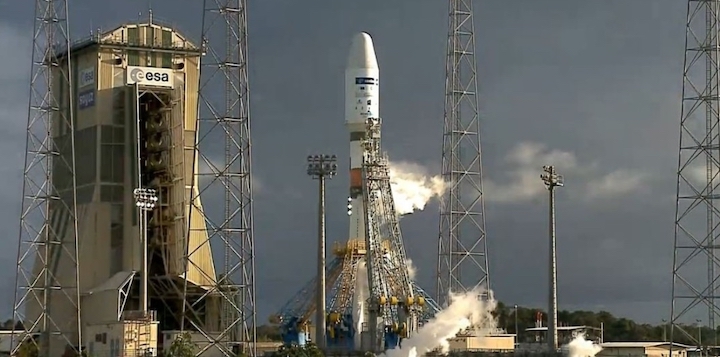
The mission’s main science goals are to measure the bulk density of super-Earths and Neptunes orbiting bright stars and provide suitable targets for future in-depth characterization studies of exoplanets in these mass and size ranges.
Effectively, the mission will be able to identify if targeted planets are rocky, a water world, or gaseous.
CHEOPS will provide the unique capability of determining radii within ~10% accuracy for a subset of those planets, in the super-Earth to Neptune mass range, for which the mass has already been estimated using ground-based spectroscopic surveys.
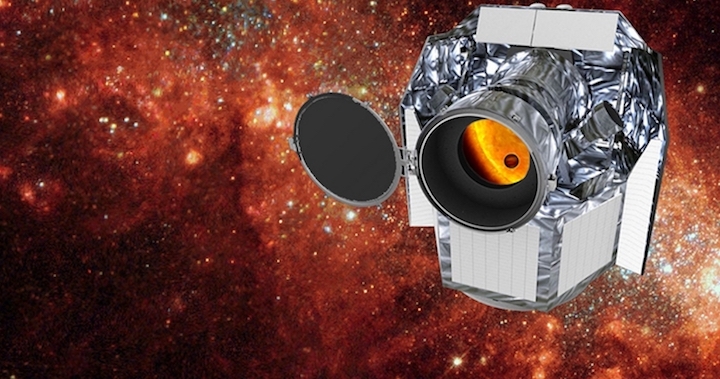
It will also provide accurate radii for new planets discovered by the next generation of ground-based or space transits surveys (from super-Earth to Neptune-size). By unveiling transiting exoplanets with high potential for in-depth characterization, CHEOPS will provide suitable targets for future instruments suited to the spectroscopic characterization of exoplanetary atmospheres.
Knowing where to look and at what time to observe makes CHEOPS the most efficient instrument to search for shallow transits and to determine accurate radii for planets in the super-Earth to Neptune mass range.
Cheops will study these planets using a Ritchey-Chrétien Telescope supplied by the University of Bern, in Switzerland.
CHEOPS has one instrument – a photometer with a single CCD, operating mainly in the visible, that is at the focal plane of the on-axis Ritchey-Chrétien telescope of 32cm diameter (clear aperture diameter of 30cm).
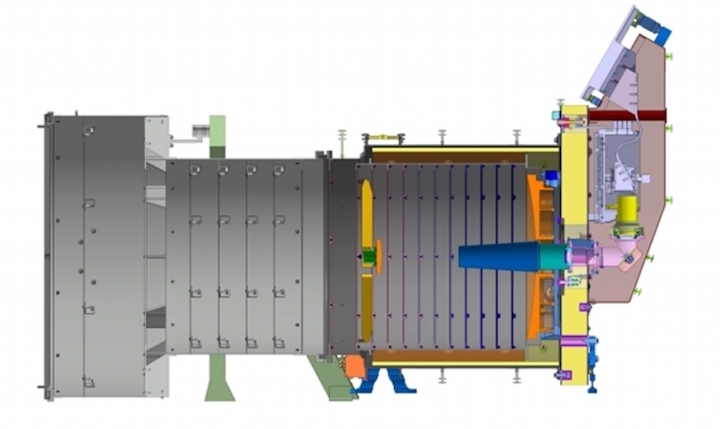
The spacecraft will be three-axis stabilized to aid the stability of the instrument as it takes observations.
In the latest reported milestone, it was integrated last month at Airbus’ Madrid-Barajas site on the already-finished platform.
